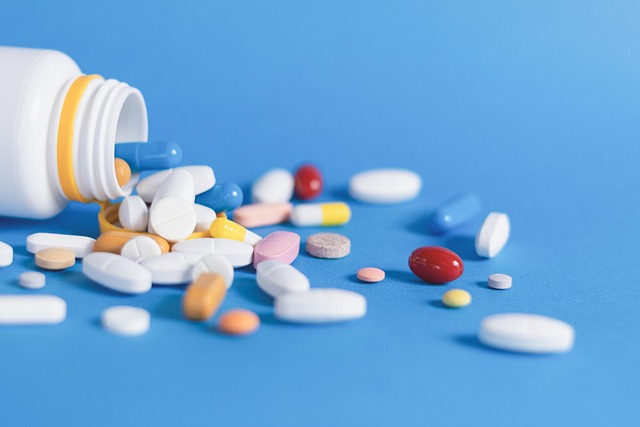The market for GLP-1 (glucagon-like peptide-1) drugs is experiencing rapid growth due to their increasing recognition as effective treatments for diabetes and obesity. These drugs mimic natural hormones to regulate insulin and glucagon levels, offering improved glycemic control and weight management. Key drivers include the convenience of once-daily or once-weekly injections, strong safety and efficacy profiles from clinical trials, and rising global diabetes and obesity prevalences. Market projections estimate a value of USD 16.5 billion by 2027 with a CAGR of 9.5%. Major players like Eli Lilly and Amgen are leading innovation, while new competitors such as Sanofi and AstraZeneca invest heavily in research and development. Patient demographics, clinical characteristics, cardiovascular benefits, and reimbursement policies significantly influence prescribing patterns. The market is poised for continued expansion with advanced delivery systems and combinational therapies, presenting significant opportunities for pharmaceutical companies and healthcare providers in managing type 2 diabetes effectively.
The global market for GLP-1 agonists is experiencing exponential growth, driven by their efficacy in managing diabetes and obesity. This article explores the rising prominence of these innovative drugs, delving into their mechanisms, global usage trends, and key players shaping the landscape. We analyze factors influencing prescribing patterns and patient demographics, providing insights into treatment adherence. Moreover, future projections highlight market analysis and emerging opportunities for GLP-1 drugs in addressing metabolic disorders worldwide.
Market Overview: The Rise of GLP-1 Agonists

In recent years, the market for GLP-1 drugs has experienced a significant surge, driven by their growing recognition as effective treatments for diabetes and obesity. These drugs, known as glucagon-like peptide-1 (GLP-1) agonists, mimic the effects of the natural hormone GLP-1, which stimulates insulin secretion and suppresses glucagon release in response to food intake. This dual action not only improves glycemic control but also aids in weight management, making GLP-1 drugs a game-changer in the healthcare industry.
The rise of GLP-1 agonist usage can be attributed to several factors. Firstly, their convenience as once-daily injections or even once-weekly formulations has improved patient adherence. Additionally, clinical trials have consistently demonstrated their safety and efficacy profiles, building confidence among healthcare providers and patients alike. Furthermore, the increasing prevalence of diabetes and obesity worldwide has created a larger patient pool, fueling market growth. As a result, the GLP-1 drug market is expected to continue expanding, with more advanced formulations and improved delivery methods on the horizon.
Understanding GLP-1 Drugs and Their Mechanisms

GLP-1 (glucagon-like peptide-1) drugs are a class of pharmaceutical agents designed to mimic the natural hormone GLP-1, which plays a key role in regulating blood sugar levels. These drugs have gained significant attention in recent years due to their dual benefits: they not only help lower blood glucose but also promote weight loss. This makes them a compelling choice for diabetes management and obesity treatment.
The mechanisms of GLP-1 drugs are multifaceted. They primarily enhance insulin secretion in a glucose-dependent manner, meaning they stimulate insulin release when blood sugar levels are high and inhibit it when they’re low, thus helping to maintain stable blood sugar. Additionally, GLP-1 drugs slow down gastric emptying, leading to increased feelings of fullness and reduced appetite. This dual action makes them highly effective in managing both type 2 diabetes and weight-related conditions.
Current Global Usage Statistics and Trends
The global market for GLP-1 drugs has experienced significant growth in recent years, driven by increasing awareness and treatment demands for type 2 diabetes and obesity. According to a 2022 report by Market Research Future (MRFR), this market is projected to reach a value of USD 16.5 billion by 2027, growing at a CAGR of 9.5% from 2020 to 2027. This growth is primarily attributed to the rising prevalence of metabolic disorders and the growing preference for effective, once-weekly injection options.
Key trends in GLP-1 agonist usage include a shift towards more user-friendly administration methods, such as once-weekly injections and oral tablets with improved bioavailability. Additionally, there’s a notable rise in combination therapies that pair GLP-1 drugs with other metabolic agents to offer comprehensive treatment solutions. Furthermore, the increasing focus on healthcare cost-effectiveness and value-based care models is expected to drive demand for these drugs, as they provide long-term benefits while potentially reducing overall healthcare expenditure.
Key Players in the GLP-1 Drug Market

The market for GLP-1 drugs has seen significant growth, driven by an increasing focus on diabetes management and obesity treatment. Several key players dominate this space, each contributing unique innovations to the landscape. Companies like Eli Lilly and Company, with its flagship product Semaglutide (Ozempic), have established themselves as leaders in the sector. Amgen’s GLP-1 drug, Dilantadol, also stands out for its diverse therapeutic applications. Additionally, new entrants such as Sanofi and AstraZeneca are making waves with their own versions, further enriching the market competition.
These pharmaceutical giants invest heavily in research and development to enhance existing medications’ efficacy, safety, and accessibility. Their efforts have led to a range of formulations—from injectables to once-weekly administrations—meant to cater to diverse patient needs. The competitive environment fosters innovation, ensuring patients benefit from improved diabetes and obesity management options through cutting-edge GLP-1 drug therapies.
Factors Influencing Prescribing Patterns

Several factors shape prescribing patterns for GLP-1 drugs, driving their increasing integration into diabetes management. Key influences include patient demographics and clinical characteristics. For instance, older adults with type 2 diabetes often benefit from GLP-1 therapy due to its potential to improve glycemic control while reducing the risk of hypoglycemia—a concern more prevalent in this age group. Similarly, patients with body mass index (BMI) above 30 may find GLP-1 drugs effective given their role in promoting weight loss alongside glucose management.
Additionally, emerging research highlighting the cardiovascular benefits of GLP-1 agonists has led to expanded indications, further influencing prescribing decisions. These drugs’ ability to reduce blood pressure and improve lipid profiles makes them appealing for patients with comorbid conditions like hypertension or dyslipidemia. Furthermore, evolving reimbursement policies and cost-effectiveness studies play a role in healthcare provider choices, as they aim to provide access to these innovative treatments while managing healthcare costs.
Patient Demographics and Treatment Adherence

Patient demographics play a significant role in shaping the landscape of GLP-1 agonist usage. These drugs, primarily used for type 2 diabetes management, have gained popularity among older adults and individuals with comorbid conditions. The growing aging population means that the demographic with the highest potential for GLP-1 drug adoption is individuals aged 65 years and above. This segment often faces unique metabolic challenges due to age-related changes, making GLP-1 therapies an attractive option for healthcare providers aiming to improve glycemic control in this vulnerable group.
Treatment adherence is another critical aspect influenced by patient demographics. Studies show that younger patients tend to have higher medication adherence rates compared to older adults, who may experience challenges related to cognitive function and complex treatment regimens. Healthcare professionals must consider these factors when designing strategies to enhance GLP-1 drug adherence, ensuring optimal diabetes management for all patient groups.
Future Projections: Market Analysis and Opportunities

The market for GLP-1 agonist usage is poised for significant growth in the coming years, driven by increasing diabetes prevalence and a growing awareness of their benefits. As research progresses, new GLP-1 drugs with improved efficacy and reduced side effects are expected to enter the market, further expanding its reach. The rise in demand for more effective and convenient treatment options for type 2 diabetes will create substantial opportunities for pharmaceutical companies and healthcare providers.
Advanced delivery methods, such as once-weekly or even once-monthly formulations, could streamline patient regimens and enhance adherence. Additionally, combinations of GLP-1 drugs with other metabolic agents may offer synergistic effects, improving overall glycemic control. These future projections highlight the exciting prospects for GLP-1 drugs in diabetes management, promising a healthier and more sustainable future for patients worldwide.
